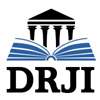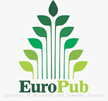ENHANCING ENGINEERING MATH UNDERSTANDING FOR MECHANICAL ENGINEERING EDUCATION STUDENTS VIA VAN HIELE PHASES AND GEOGEBRA
Abstract
This study examined the integration of Van Hiele teaching phases and GeoGebra software to enhance comprehension in engineering mathematics among mechanical engineering education students. A quasi-experimental design was employed to compare learning outcomes between an experimental group using this integrated approach and a control group receiving traditional instruction. Structured teaching methods in this context referred to a systematic instructional framework based on the Van Hiele model, which organized learning into progressive phases from basic exposure to advanced conceptual analysis to build a solid cognitive foundation. Meanwhile, dynamic visualisation tools, denoted as interactive software, such as GeoGebra, that allowed students to manipulate and explore mathematical models in real time, thereby transforming abstract concepts into tangible visual experiences. Data were collected using mathematics proficiency tests and were analysed through the Structure of the Observed Learning Outcome taxonomy and Cognitive Load Theory principles. The findings revealed that the mean score increase represented the absolute difference between pre-test and post-test averages, with the control group showing a higher raw improvement (23.29%) than the experimental group (16.17%). However, the normalized gain (N-gain), which measured relative learning progression accounting for initial knowledge levels, was greater in the experimental group (48%) compared to the control group (40%). A t-test analysis (p < 0.05) confirmed a statistically significant difference, highlighting the advantages of integrating Van Hiele teaching phases with GeoGebra in engineering mathematics education. This study contributed to the development of technology-enhanced learning strategies in mathematics education and recommended that future research explore the scalability and cross-disciplinary applicability of this integrative approach.
Keywords
Full Text:
PDFReferences
Abduh, M., Waluya, S., & Mariani, S. (2020). Analysis of problem solving on IDEAL problem solving learning based on Van Hiele theory assisted by GeoGebra on geometry. Unnes Journal of Mathematics Education Research, 2(9), 170–178.
Adeniji, S. M., & Baker, P. (2022). Worked-examples instruction versus Van Hiele teaching phases: A demonstration of students’ procedural and conceptual understanding. Journal of Mathematics Education, 13(2), 337–356.
Ahmad, N., & Aldiabat, S. (2024). Teaching geometry using Van Hiele’s phase-based instructional strategy. International Journal of Academic Research in Progressive Education and Development, 13(1), 495–508.
Ansah, S., Asiedu-Addo, S. K., & Kabutey, D. T. (2022). Investigating the effect of using GeoGebra as an instructional tool on Van Hiele’s geometric thinking levels of senior high technical school students. International Journal of Mathematics and Statistics Studies, 10(1), 31–39.
Barlow, A., Brown, S., Lutz, B., Pitterson, N., Hunsu, N., & Adesope, O. (2020). Development of the student course cognitive engagement instrument (SCCEI) for college engineering courses. International Journal of STEM Education, 7(1), 22.
Bosse, M. J., Bayaga, A., Lynch-Davis, K., & DeMarte, A. (2021). Assessing analytic geometry understanding: Van Hiele, SOLO, and beyond. International Journal for Mathematics Teaching and Learning, 22(1), 1–23.
Buchori, A., Putra, F. G., & Rahmawati, N. D. (2024). AR-based interactive GeoGebra learning media for optimizing transformation geometry learning in higher education: Media pembelajaran interaktif GeoGebra berbasis AR untuk mengoptimalkan pembelajaran geometri transformasi di pendidikan tinggi. Indonesian Journal on Science and Mathematics Education, 7(3), 437–450.
Fang, X., Ng, D. T. K., & Yuen, M. (2025). Effects of GeoGebra-enhanced Scratch computational thinking instruction on fifth-grade students’ motivation, anxiety, and cognitive load. Education and Information Technologies, 30(1), 377–402.
Fitriyani, H., Widodo, S. A., & Hendroanto, A. (2018). Students’ geometric thinking based on Van Hiele’s theory. Infinity Journal, 7(1), 55-60.
Fransina, M., Ruslau, V., & Dadi, O. (2025). The impact of GeoGebra AR on students’ geometric thinking based on Van Hiele theory. Journal of Hypotenuse Mathematics, 8(1), 115–128.
Ghunaimat, M. A., & Alawneh, E. A. (2024). The effectiveness of using the SOLO taxonomy in acquiring students the concepts of coordinate geometry. International Journal of Recent Educational Research, 5(3), 523–536.
Gökçe, S., & Güner, P. (2022). Dynamics of GeoGebra ecosystem in mathematics education. Education and Information Technologies, 27(4), 5301–5323.
Haciomeroglu, E. S., Bu, L., Schoen, R. C., & Hohenwarter, M. (2009). Learning to develop mathematics lessons with GeoGebra. MSOR Connections, 9(2), 24–26.
Hake, R. R. (2002). Relationship of individual student normalized learning gains in mechanics with gender, high school physics, and pretest scores on mathematics and spatial visualization. Physics Education Research Conference, 8(1), 1–14.
Kamalasari, A. F., Sukestiyarno, Y. L., & Cahyono, A. N. (2022). E module using Van Hiele phases of learning to improve students’ mathematical creative thinking skills. Unnes Journal of Mathematics Education Research, 11(15), 200–208.
Kohen, Z., Amram, M., Dagan, M., & Miranda, T. (2022). Self-efficacy and problem-solving skills in mathematics: The effect of instruction-based dynamic versus static visualization. Interactive Learning Environments, 30(4), 759–778.
Kramarenko, T. H., Pylypenko, O. S., & Moiseienko, M. V. (2024). Enhancing mathematics education with GeoGebra and augmented reality. CEUR Workshop Proceedings, 3844, 117–126.
Naufal, M. A., Abdullah, A. H., Osman, S., Abu, M. S., Ihsan, H., & Rondiyah. (2021). Reviewing the Van Hiele model and the application of metacognition on geometric thinking. International Journal of Evaluation and Research in Education, 10(2), 597–605.
Nigusse, G. A., & Kassa Michael. (2022). GeoGebra supported multiple representations to enhance representational skills in calculus. Asian Journal of Assessment in Teaching and Learning, 12(2), 110–121.
Noviana, W., & Hadi, W. (2021). The effect of Van Hiele learning model based GeoGebra on students’ spatial ability. In Proceedings of the 1st Annual International Conference on Natural and Social Science Education (ICNSSE 2020), 547, 14–19.
Novitasari, D., MS, A. T., Hamdani, D., Junaidi, J., & Arifin, S. (2021). Pengembangan LKPD berbasis GeoGebra untuk meningkatkan pemahaman konsep matematika. Jurnal Edukasi dan Sains Matematika (JES-MAT), 7(1), 1–16.
Ouwehand, K., Lespiau, F., Tricot, A., & Paas, F. (2025). Cognitive load theory: Emerging trends and innovations. Education Sciences, 15(4), Article 458.
Putri, U. C., & Fitriyani, H. (2023). Kemampuan penalaran adaptif siswa ditinjau dari level berpikir geometri menurut teori Van Hiele. AdMathEdu Journal, 10(1), 27–32.
Restrepo-Ochoa, J. F., Gualdrón-Pinto, E., & Ávila-Ascanio, L. F. (2023). Improving the learning of geometric proportionality using Van Hiele’s model, mathematical visualization, and GeoGebra. Eurasia Journal of Mathematics, Science and Technology Education, 19(9), Article em2330.
Runtu, C. I., Sulangi, V. R., & Pangemanan, A. S. (2023). Development of the design of mathematical learning material on maximum and minimum value derivatives based on Van Hiele theory with the assistance of GeoGebra. Journal on Education, 6(1), 193–202.
Safira, A. K., & Musdi, E. (2019). Teori Van Hiele dan hasil belajar dalam bidang geometri. Jurnal Edukasi dan Penelitian Matematika, 8(2), 6–10.
Salami, O. O., & Spangenberg, E. D. (2024). Integration of GeoGebra software into mathematics instruction. Studies in Learning and Teaching, 5(1), 118–126.
Seloane, P. M., Ramaila, S., & Ndlovu, M. (2023). Developing undergraduate engineering mathematics students’ conceptual and procedural knowledge of complex numbers using GeoGebra. Pythagoras, 44(1), 1–14.
Sharp, J. M., & Zachary, L. W. (2004). Using the Van Hiele K–12 geometry learning theory to modify engineering mechanics instruction. Journal of STEM Education: Innovations and Research, 5(1), 40–46.
Silmi, U., & L, D. A. M. (2022). Systematic literature review: Teori Van Hiele dalam meningkatkan kemampuan berpikir geometris siswa sekolah dasar. PEDADIDAKTIKA: Jurnal Ilmiah Pendidikan Guru Sekolah Dasar, 9(2), 327–338.
Sweller, J. (2020). Cognitive load theory and educational technology. Educational Technology Research and Development, 68(1), 1–16.
Uwurukundo, M. S., Maniraho, J. F., & Tusiime, M. (2020). GeoGebra integration and effectiveness in the teaching and learning of mathematics in secondary schools: A review of literature. African Journal of Educational Studies in Mathematics and Sciences, 16(1), 1–13.
Uwurukundo, M. S., Maniraho, J. F., Tusiime, M., Ndayambaje, I., & Mutarutinya, V. (2024). GeoGebra software in teaching and learning geometry of 3-dimension to improve students’ performance and attitude of secondary school teachers and students. Education and Information Technologies, 29(8), 10201–10223.
Watan, S., & Sugiman. (2018). Exploring the relationship between teachers’ instructional and students’ geometrical thinking levels based on Van Hiele theory. Journal of Physics: Conference Series, 1097(1), 12122.
Zetriuslita, Nofriyandi, & Istikomah, E. (2020). The effect of GeoGebra-assisted direct instruction on students’ self-efficacy and self-regulation. Infinity Journal, 9(1), 41–48.
Ziatdinov, R., & Valles, J. R. (2022). Synthesis of modeling, visualization, and programming in GeoGebra as an effective approach for teaching and learning STEM topics. Mathematics, 10(3), Article 398.
Zulnaidi, H., & Zamri, S. N. A. S. (2017). The effectiveness of the GeoGebra software: The intermediary role of procedural knowledge on students’ conceptual knowledge and their achievement in mathematics. Eurasia Journal of Mathematics, Science and Technology Education, 13(6), 2155–2180.
DOI: https://doi.org/10.17509/jmee.v12i1.84470
Refbacks
- There are currently no refbacks.
Copyright (c) 2025 UNIVERSITAS PENDIDIKAN INDONESIA

This work is licensed under a Creative Commons Attribution-ShareAlike 4.0 International License.
Indexed by:
ISSN: P 2356-4997
View My Stats
 Journal of Mechanical Engineering Education (Jurnal Pendidikan Teknik Mesin)
Journal of Mechanical Engineering Education (Jurnal Pendidikan Teknik Mesin)









